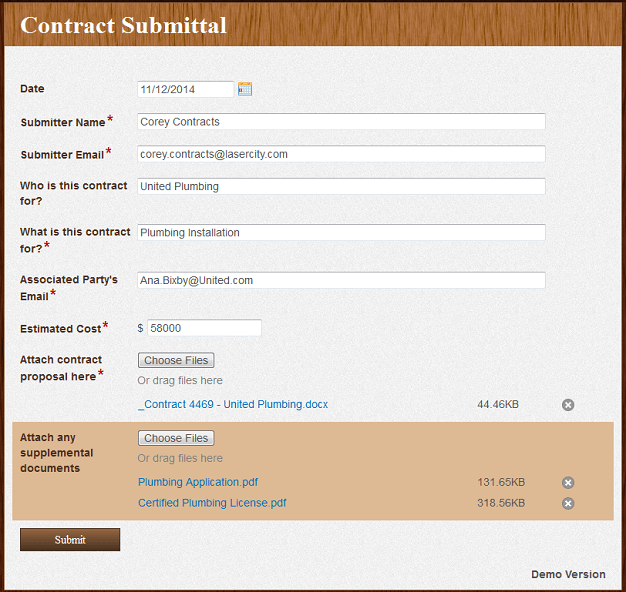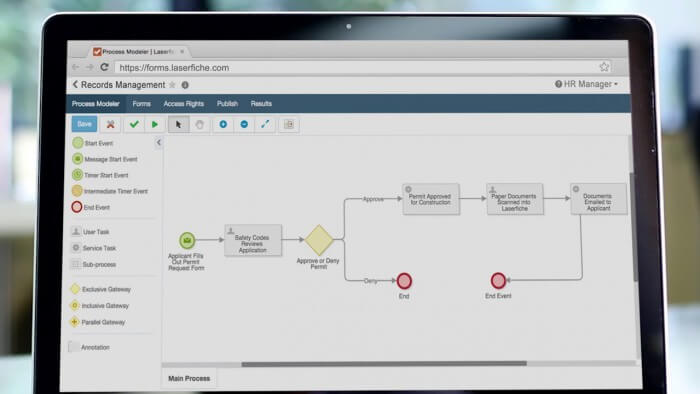3 Steps for Optimizing Business Processes
What’s better? Processing a document digitally or with paper? If both methods take the same amount of time and effort—the answer is neither.
Optimizing a business process requires more effort than simply purchasing new software. It requires taking a critical look at an organization’s operations and minimizing the resources required to get things done.
This blog post will outline three steps to optimizing your organization’s business processes.
First, let’s establish what kinds of business processes we’ll be discussing:
Document-based business processes
Every organization, whether it provides education to students or wine to consumers, relies on repetitive tasks to accomplish its “big picture” goals. Contract management, invoicing and hiring are just a few examples of processes that keep businesses moving. The tasks that fall under each process must be handled attentively and consistently—no matter how menial they may seem.

These document-based processes are imperative to business operations, but in some cases they’re more of an Achilles’ heel than a blueprint for success. Do any of your everyday tasks feel more burdensome than productive? Keep one in mind as we go through the phases of business process optimization.
Phase 1: Identify
Once you determine which business process needs an overhaul, the first step is to list out all the key components of the process. These should be fundamental, unchangeable aspects of the process. To identify key components, ask yourself these questions:
- What is the goal or desired outcome of this process?
- When does the process begin and end?
- What activities move the process forward?
- What departments and/or employees are involved?
- What information is being transferred between steps?
For instance, the following questions should be answered in the case of employee hiring:
- What is the goal or desired outcome of this process? To hire a qualified candidate for the job.
- When does the process begin and end? It begins when an application is received and ends with the decision to hire or reject.
- What activities move the process forward? Application reviews, interviews, approvals and rejections.
- What departments and/or employees are involved? HR and the applicable department managers.
- What information is being transferred between steps? Applications, resumes, cover letters, interview dates/times and notes from reviewers.
Note that the answers don’t address how the process is done, only what is done.
Phase 2: Rethink
This phase should address your unique methodology and reveal potential areas for improvement. Think about every step that is involved in the business process you’re analyzing, then ask the following questions:
- How much paper is used in this process?
- How many copies of the same document are made?
- How many man hours are required to complete the process?
- Of those hours, how many are spent doing redundant or extraneous work?
- Where does the process stall and why?
- When do errors occur?
Compare these answers against your key components list. You’ll realize tasks that seem essential, like photocopying a document for every department manager, don’t actually align with the process goal. You’ll also realize that correcting an error is only essential if an error is made—eliminate the error, and you eliminate an extra task that does nothing to drive the process forward.
Let’s look at another example. RMS, a medical device manufacturing company, answered the above questions and found that its document management processes were inefficient. Important information for each order was compiled in a large folder and hand-delivered between departments across a 155,000 sq. ft. shop. RMS threw out the book (literally) and starting using business process automation (BPA) tools to digitize orders and automatically route them to the appropriate departments at the appropriate times. This cut order processing time from 8-10 weeks to 72 hours and saved over 200 hours of staff time annually.
The intention of business process optimization is to reduce or eliminate time waste, resource waste, unnecessary costs, bottlenecks and errors while achieving the goal of the process. But until you know how this can be accomplished, you’re stuck in dreamland.
Phase 3: Automate
Repeat unnecessary tasks, and workflow stalls. Repeat successful tactics, and business flourishes. Once you’ve separated the essential from the non-essential in your business process, it’s time to apply a solution. But if this is your first experience overhauling a document-based process, you might feel daunted by the possibilities. You could even worry that you’ll make more mistakes if you alter the process than if you just leave it alone.
As a matter of fact, alleviating this concern over human error is precisely what BPA tools are designed to do. By allowing the software to “automate” tasks, organizations can manage processes faster and with fewer errors. You can read more about automation and see some concrete examples here.

Of course, not all automated workflows perform the same. How can you design the fastest, easiest and most cost-efficient business process possible?
Next step: Learn from the best
By repeating the best practices of other organizations or departments, you can demonstrate tangible ROI and avoid a lot of guesswork. Most importantly, you’re better equipped to convince your coworkers that change is not only possible, it’s practical.
For an overview of how process automation can help your organization streamline operations, watch our webinar, ECM 101: An Introduction to Process Automation Capabilities.
To learn more about how process automation software can help you automate routine tasks, such as data entry, routing information between parties, organizing documents and more, check out our process automation buyer’s guide.


